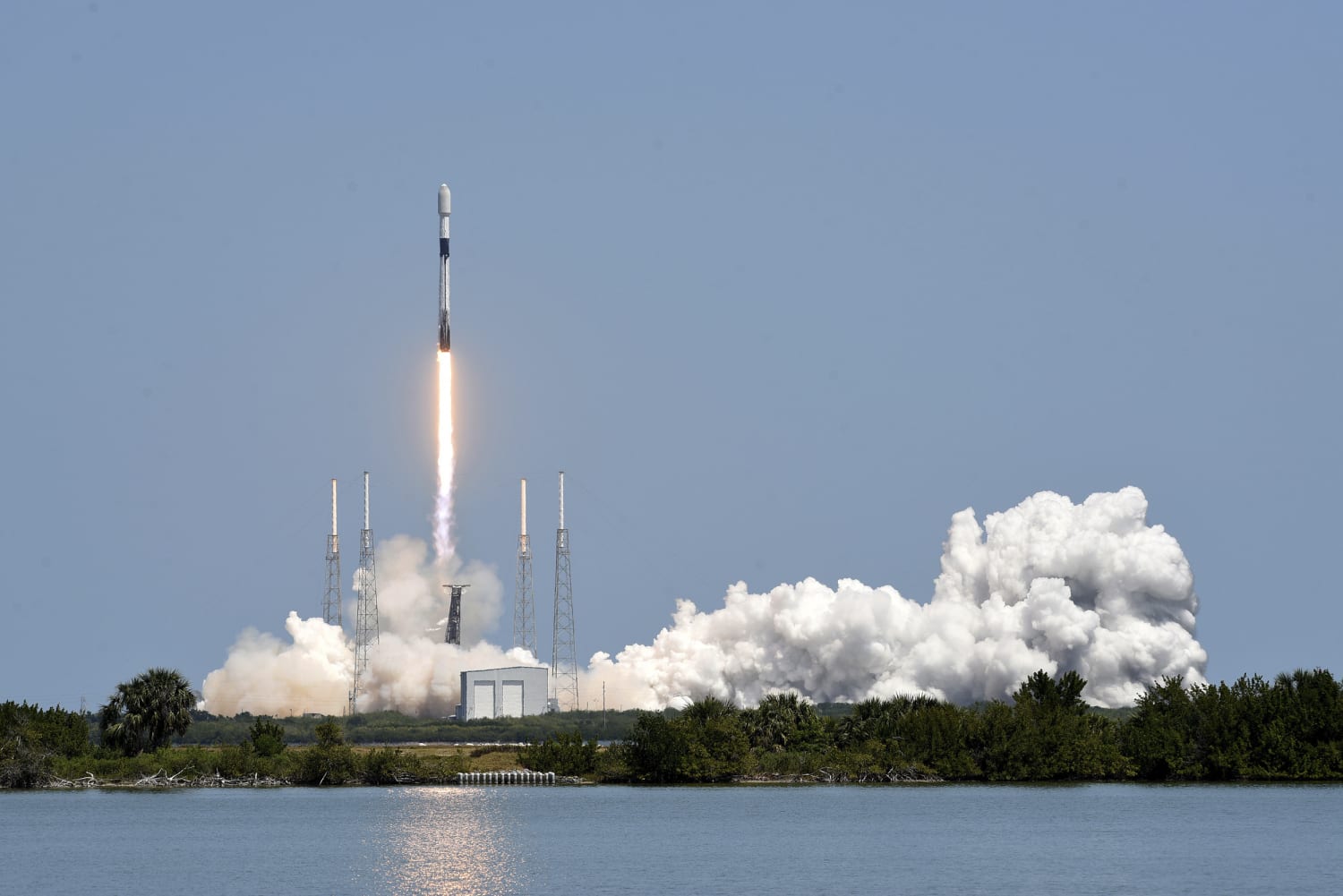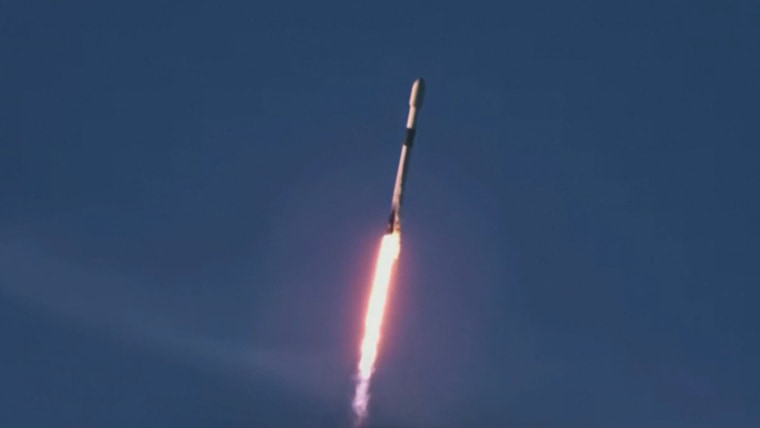Up to 40 Starlink satellites, launched earlier this month as part of Elon Musk’s efforts to build a high-speed internet network, were lost after a recent geomagnetic storm in space, company officials confirmed Tuesday.
The storm, triggered by eruptions from the sun, destroyed most of the 49 Starlink satellites launched into orbit Thursday, according to SpaceX, the private aerospace company Musk founded. The now-defunct satellites are expected to fall back to Earth in the coming days and burn up in the atmosphere.
“The deorbiting satellites pose zero collision risk with other satellites and by design demise upon atmospheric reentry — meaning no orbital debris is created and no satellite parts hit the ground,” SpaceX officials said in a statement.
The satellites were lofted into orbit aboard one of SpaceX’s Falcon 9 rockets from Florida’s Kennedy Space Center. A day later, on Friday, a geomagnetic storm caused the atmosphere to warm, which SpaceX officials said increased atmospheric drag “up to 50 percent higher than during previous launches.”
Atmospheric drag exerts friction against the motion of satellites — akin to when a person tries to run into a strong headwind.
SpaceX said the positions of the spacecraft were adjusted to try to shield them from the storm and minimize drag, but assessments revealed that the company will be unable to boost many of the newly launched satellites into their higher, operational orbits.
As a result, “up to 40 of the satellites will reenter or already have reentered the Earth’s atmosphere,” the company said in the statement.
Geomagnetic storms typically result from solar activity. When eruptions such as solar flares belch from the sun’s surface, they send waves of plasma and charged particles through space, which can disrupt satellites and interfere with power grids and other electronic infrastructure.
Though the doomed Starlink satellites are not expected to languish in orbit or generate space junk that reaches Earth’s surface, the venture has been at the center of debates about the safe and sustainable use of space.
Musk has said Starlink’s goal is to provide high-speed internet service to consumers anywhere on the planet. More than 2,000 Starlink satellites have already been launched into low-Earth orbit, and if the company’s plans are approved by the International Telecommunication Union, the fleet could grow to include 30,000 additional satellites.
Astronomers have said these huge constellations of internet satellites could interfere with their ability to study the night sky. Others have said adding tens of thousands of new satellites to the already-cramped space around Earth could elevate collision risks and make it more difficult to operate in low-Earth orbit.
Starlink says it is committed to maintaining a sustainable space environment, adding that this recent mishap “demonstrates the great lengths the Starlink team has gone to ensure the system is on the leading edge of on-orbit debris mitigation.”
Source: | This article originally belongs to Nbcnews.com











